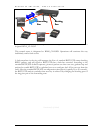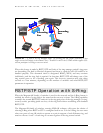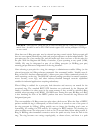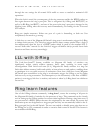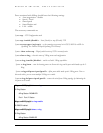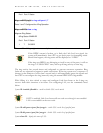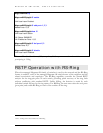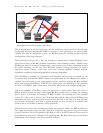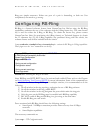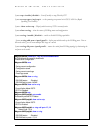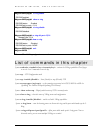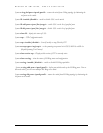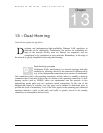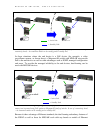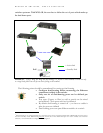
MAGNUM 6K SWITCHES, MNS-6K USER GUIDE
FIGURE 90 – More than one RS-Ring cannot be defined per managed Magnum 6K switch. Note –
unmanaged switches cannot participate in RS-Ring.
Ring 1
Ring 2
Ring 1
Ring 2
The port-pairs may be of any media type, and the media type does not have to be the same
for the pair. With the Magnum 6K family of switches, a port operating at any speed (10Mb,
100Mb, Gb) may be designated as part of a RS-Ring port pair ensuring proper Ethernet
configuration of the ring elements.
After selecting a port-pair for a ring, the manager or administrator enables RS-Ring on the
selected port-pairs via RS-Ring software commands. One command (enable / disable) turns
RS-Ring on and off. Another command adds / deletes port- pairs. Other commands provide
for status reporting on the ring. The MNS-6K software package provides for remote
operation, access security, event logs, and other industry-standard managed network
capabilities suitable for industrial applications requiring redundancy.
When RS-Ring is enabled for a port-pair, fault detection and recovery are armed for the
associated ring. The standard RSTP functions are performed by the Magnum 6K family of
switches for other ports in the same manner as they would be without RS-Ring enabled,
when operating in the RING_CLOSED state. During this state, RS-Ring is also watching
the flow of the BPDU packets that move around the ring between the designated part-pair.
The extra capability of RS-Ring comes into play when a fault occurs. When the flow of
BPDU packets around the ring is interrupted RS-Ring quickly acts to change the blocking
port’s state to forwarding. No waiting for RSTP analysis. No checking for other possible
events. No other ports to look at. No 30-second delay before taking action. RS-Ring takes
immediate corrective action for quick recovery from the fault in the ring. The ring becomes
two strings topologically, and there is a path through the two strings for all normal LAN
traffic to move as needed to maintain LAN operations.
When the fault is cured, the re-emergence of the ring structure enables the BPDU packets to
flow again between the ring’s port-pair. This flow of packets may take as long as 6 seconds
in most situations. This is recognized by RS-Ring as well as by RSTP and one of the ports in
the defined ring port pair is changed to the blocking state. RS-Ring takes the recovery action
immediately, not waiting for the 30-second STP analysis.
163



